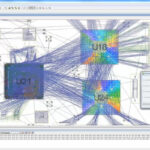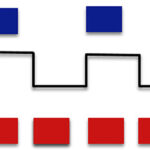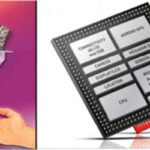 BlackBerry Limited announced the release of QNX Hypervisor 2.2, the latest edition of the company’s real-time embedded hypervisor product.
BlackBerry Limited announced the release of QNX Hypervisor 2.2, the latest edition of the company’s real-time embedded hypervisor product.
With QNX Hypervisor 2.2, manufacturers and other embedded system suppliers are empowered with ultimate design flexibility and scalability to consolidate multiple systems with mixed-criticality and different operating environments onto a single hardware platform, reducing both the initial development and long-term costs of ownership for a wide variety of embedded systems – from rail and robotics controllers to vehicle digital cockpits and battery management ECUs.
Based on the QNX Neutrino Real-time Operating System (RTOS) 7.1, QNX Hypervisor 2.2 supports the latest silicon enhancements for interrupt control, scalable vector extensions (SVE), cryptography, and enhanced security, and offers features such as fast booting of critical system services before guest launch and priority-based sharing of hardware resources and devices. QNX Hypervisor 2.2 also adds to the extensive VIRTIO shared device support offered by previous QNX Hypervisor releases, including adding sources of entropy.
QNX Hypervisor 2.2 provides development teams with a robust and reliable hypervisor domain on which they can run Android and Linux distributions. QNX Hypervisor 2.2 can be scaled so that system architects can choose to run the software in a virtual machine or alongside the virtual machine in the host domain. This flexibility allows developers to add Android and Linux to an SoC without compromising on features and performance while at the same time reducing system complexity. Mission-critical applications can share host domain services (backends) with Android-based on priority scheduling and therefore precisely control the guest’s behavior. As with all BlackBerry QNX Hypervisor product releases, system architects also have full control over the separation and isolation of guests and devices as well as deep insight into Hypervisor operations through the QNX Momentics Tool Suite.
BlackBerry QNX has a broad portfolio of embedded system software designed for mission-critical implementations, including the QNX Hypervisor, QNX Neutrino Real-time Operating System, in addition to middleware and development tools. Safety-certified variants of the hypervisor – QNX Hypervisor for Safety and the OS – QNX OS for Safety, are also available. BlackBerry’s pedigree in safety, security, and continued innovation has led to its QNX technology being used in hundreds of millions of critical systems for medical devices, industrial controls, automotive, commercial trucking, rail, and robotics systems worldwide.
For more information on BlackBerry QNX products and engineering services for embedded systems, please visit BlackBerry.QNX.com.





Leave a Reply